|
7/4/2023 0 Comments Healing CavitiesCan Cavities Heal? The official story is they cannot. Certainly, dentists don’t spend any time talking about healing cavities. They just go right to drill and fill. Now, don’t get me wrong. I am grateful for modern dentistry and all it does to help us keep the teeth we have as long as possible. However, it never made sense to me that teeth couldn’t heal. After all, bones heal. Just about any other part of the body can heal as long as the damage isn’t too great. I got a chance to not only see proof that teeth can heal but to watch as my dentist witnessed this proof as well. I’ve shared this story, along with the protocol we used to achieve the results, so many times that decided to finally write a blog post and make it available. That way, I can share a link instead of retelling it over and over. A few things first… This is just one person’s story. I don’t pretend to be an expert on dental hygiene or healing. I don’t claim this is the only way to heal cavities. It is just what worked for us. I also don’t claim this method is foolproof. It took a lot of dedication for us to be successful. I suspect that a young teenager in excellent health might have an easier time of it than a middle-aged person with chronic health issues, but that is just speculation. Here is the background… A teenager at a routine dental check-up got X-rays, which showed some cavities forming between the teeth. This teen had not been stellar at dental hygiene lately and was really disappointed about the consequences. We made an appointment for the first filling (for about one month later) but also made plans to try to heal them since they were still small and not causing discomfort. The teen followed the protocol for a month, then we went back for the appointment. I asked for another X-ray. I was told cavities don’t heal, but they humored me. The X-rays showed no obvious difference, so one cavity was filled that day. Bummer. But I scheduled the appointment for the second cavity another month away. I wasn’t giving up, and this teen wasn’t either. They kept at it, following every step. At the next visit, I asked for more X-rays. Again, they humored me. But this time we could clearly see improvement from the original X-ray. Enamel was returning! The dentist sent us home with no drilling and filling. The protocol… This is the protocol I put together for this teen to follow.
My takeaway… I believe that teeth can absolutely heal. The difficulty is that this is a very difficult area to keep clean and sterile, as we would for any other area of the body with a wound. The important things to keep in mind are good hygiene, the necessary vitamins for bone healing, herbs that are antiseptic and strengthening to enamel, and a willingness to stick with it and give it time (it was 2 months before we saw results). One last note before I end this topic. I have seen other articles on healing cavities talk about how you absolutely cannot do this if you are eating a vegan diet. Well, the teen in this story had been vegan for years and was still able to heal their cavity. Herbal Tooth Powder…
For regular, informative articles on herbal medicine making at both the beginning and advanced level, visit my Patreon page by clicking the button below. Supporters help me to keep my clinical fees low while learning about plant medicine and how you can use it in your own life.
0 Comments
10/31/2022 0 Comments Why Work with an Herbalist?Herbalism is an empowering skill. Often, when folks pick up their first book on herbal medicine, or go on their first medicinal plant walk it can be like opening a treasure box. Wow, these plants have been around me this whole time and I never knew they could be healing! Or, if we start buying prepared tinctures and teas and feel noticeable improvement and ease of symptoms it can be amazing. I love teaching folks to make medicine, recognize the wild medicine, and formulate for their own health needs. I love seeing folks empowered to use nervines, digestive tonics, and cold and flu formulas to improve their quality of life. It is amazing to see the excitement as they learn to navigate the world of herbal medicine that is truly their ancestral heritage. But then I will inevitably get questions like, “what herbs are good for endometriosis?”, or “do you have a formula for IBS?”. My answers to the above questions are… it depends, and no. Endometriosis and Irritable Bowel Syndrome are complicated and chronic conditions. Yes, herbs can help with both of these, but there is no one-size-fits-all solution here. With chronic health conditions there is a whole person picture to assess. And a well-thought-out herbal plan will take into account not only the current symptoms, but the health history of the person, any medications they are taking, their diet and lifestyle, and what they can practically take on at this point in their health journey. In these situations, working with a trained clinical herbalist can be very helpful in determining practical and effective strategies for working on your health goals. In addition, some folks find that they are better able to stick with a plan over the long run when they know someone will be checking in on them, offering encouragement and feedback, and helping to adjust things along the way. For some folks, a couple meetings is all they need to get started on a plan and take over from there. For others, checking in regularly helps them stay on track and stay motivated. It can also be helpful to have the continued support of someone who sees how hard you have worked and how far you have come. Ultimately, an herbalist is just someone in your corner, offering advise on how to use the plant medicine to meet your wellness goals, yes, but they can't do the work for you. Just like the herbs are here to nudge us forward, clinical herbalists too offer some gentle nudges in the form of support, education, resources, herbal formulas, dietary suggestion, and encouragement. However, you are always in control and it is important that any changes you make feel good to you, as well as doable within your lifestyle and present circumstances. Some folks need to go slowly, easing into a program. Others are ready to jump in with both feet and make some big changes. Success over time depends on making changes that can be sustained over time. It's not about perfection, but improvement. If you are ready to start working with a clinical herbalist to meet your wellness goals, I am currently seeing new clients. All consultations are online. Although I specialize in working with perimenopause, I am able to work with just about anyone. For more information, or to schedule a consultation, click the button below.
8/22/2022 1 Comment Herbs for ResilienceIn my last post, I wrote about how stress affects hormone levels. But how do we get a handle on chronic stress? Sometimes, we can eliminate the stressors in our lives… turn off the news for a few days, say no to unnecessary obligations, create healthy boundaries… But we can never eliminate all stressors. Nor would this be healthy. We need stress in our lives to challenge us and help us grow. But we also need to have the ability to respond to stressors in a healthy way. Increasing our ability to respond to stress is increasing resilience. What is Resilience?Merriam-Webster defines resilience as… 1: the capability of a strained body to recover its size and shape after deformation caused especially by compressive stress 2: an ability to recover from or adjust easily to misfortune or change Cultivating resilience allows us to more easily recover from the normal, everyday stressors of life. It means we have the capacity to experience stress, respond appropriately, and recover quickly, without feeling overwhelmed or run down. Doesn’t that sound lovely? Increasing Resilience Once we have decreased the stressors we have control over, there are many ways to increase resilience in our lives. Before bringing in the herbal allies, it is important to look at lifestyle factors. Things like sleep quantity and quality, diet, exercise, and connection with community are all important here. In addition, we can increase our resilience by engaging in practices such as meditation, deep breathing, gratitude journaling, and spending time in nature. Even something as simple as making time to do things that bring you joy can increase resilience. Herbs can help too. When we have taken the time to adjust our lifestyle first, bringing in the herbs to help can be so powerful. Here are some of my favorite herbs for increasing resilience. Herbs for Resilience Plant allies that increase our resilience fall into a few different categories. Here are some of my favorite, the ones I work with the most in my own practice. Nervous System Tonics These are herbs that tone and strengthen our nervous system. They are safe and most effective when taken over an extended period of time.
Adaptogens Adaptogens increase our resilience when taken over time. They are slow and steady builders. (Many herbs people classify as adaptogens are actually stimulants. They give you a false sense of energy and well-being temporarily, but actually rob you of your energy stores and with continued use can lead to burnout and fatigue… rhodiola, eleuthero, ginseng )
Bitters Bitters bring the energy back to our digestive system, stimulate the vagus nerve, and ground us.
Heart Protectors These are herbs that help us keep our hearts open and receptive, yet protected, in times of fear and stress.
Anyone who works with herbs would do well to have some of these herbs for resilience in their materia medica. If you don’t work with herbs yourself, it can be helpful to work with a clinical herbalist. They can look at your whole picture and put together a formula designed just for you. However you bring resilience-building herbs into your life, make sure it is part of a larger plan that includes lifestyle. You will be amazed at how much increasing resilience increases the quality of your life.
The female reproductive cycle involves a beautiful orchestration of hormones that rise and fall throughout our monthly cycles. This hormone cycle, when it is functioning well, allows our bodies to mature healthy follicles, release them from our ovaries, prepare the uterus for implantation and possible pregnancy, or shed its lining in preparation for another cycle. In addition, healthy reproductive hormone levels have other benefits for us, including an increased sense of well-being, healthy blood sugar levels, improved sleep, and more. When our hormone levels are good, we experience regular cycles and minimal period discomfort and symptoms. When hormone levels go awry, however, things don’t work as smoothly as they should. The results can be irregular periods, increased pain, too much bleeding (or too little), and eventually, chronic reproductive conditions can develop. And if we are getting close to menopause, the transition can be much more difficult. Oftentimes, folks know their hormone levels are wonky. They may have had levels tested or they may just “feel” that things are off. Sometimes I get asked about herbs to help with this. Folks will ask, “what can I take to balance my hormones?” or “what herbs will increase progesterone?”. However, as clinical herbalists, we often do not use herbs with the intention of having a direct effect on the endocrine system. Rather, we use herbs (along with diet and lifestyle strategies) to support the body into a more healthy and balanced state so that healthy hormone levels are more likely to result. There are many possible underlying causes of dysregulated hormone levels. But I would like to talk about one of the big ones here, and that is stress. The Stress Response When we are under stress, a chain reaction that begins in our brain and ends with our adrenals releasing cortisol is triggered. This moves us into the sympathetic mode of our autonomic nervous system. This is also called the fight or flight mode because it gives us the ability to more effectively defend ourselves or escape from danger. In the short term, the stress response is a good thing. It is a survival strategy that helps to keep us alive. However, if we are in the sympathetic mode too much, or all the time, we start to experience negative consequences. Our sleep can become disturbed, we can have digestive issues, we become more anxious and irritable… Eventually, we can start to develop chronic conditions. But being in fight or flight too much will also affect reproductive hormones as well. How does stress affect reproductive hormones The stress response is meant to be a short-term survival mode. As such, it moves function toward areas of the body we need for immediate survival, such as the muscles, senses, heart, and lungs. Things that are not required for protecting ourselves or escaping danger, digestion for example, are not a priority, and neither are sex and reproduction. Again, this is ok if we are in sympathetic mode short-term, but oftentimes we are in this mode much more than is healthy. The stress response is triggered whether the danger is real or not. If our lives are in danger now and we can do something about it, the stress response is wonderful. However, if we are stressed by the news, finances, or work the stress response becomes less helpful. If we cannot use it to do something, get out of danger, and then return to rest and digest, then we stay in the sympathetic mode longer than is sustainable. How does long-term stress affect reproductive hormones? Let’s take a look. Chronically high cortisol levels alter the release of GnRH in the hypothalamus, as well as FSH and LH from the pituitary. These are the hormones that stimulate ovulation, and mature follicles in the ovaries. In addition, high levels of cortisol block progesterone receptors, which affects not only reproductive function, but sleep, inflammation, serotonin levels, immune function, and brain health. Over time, we begin to see things like suppressed ovulation, irregular cycles, a decline in libido, worsening sleep, increased menstrual pain, missed periods, and decreased fertility. Eventually, we can see the beginnings of chronic conditions developing. You can see now how important it is to get a handle on stress levels when addressing reproductive health. But addressing stress levels requires conscious effort. Our stressors don’t just go away. Yes, herbs can help us support our nervous system and build resilience. We can use nervous system tonics and adaptogens to increase our capacity to handle the stressors in our lives. But we need more than herbs here. We need healthy boundaries, we need quality sleep, and we need to eat right, exercise, and connect with community. When we combine stress reduction and herbs for resilience with addressing other root causes of hormonal imbalance we often start to see levels normalizing and symptoms improving. It really is about the whole picture. Read about my favorite herbs for building resilience here.
5/31/2022 3 Comments The Beauty of HydrosolsI still remember the first time I witnessed a hydrosol distillation. My teacher, Susan Hess, along with Tina Sams and Maryanne Schwartz, had organized a local herb festival at a park in Pennsylvania. I was there teaching a class on root medicine. Tina and Maryanne were teaching a class on hydrosols. They brought their glass still and set up a distillation for all of us to witness as they talked about making and using hydrosol medicine. I was so mesmerized by this process. The air filled with the aroma of lavender, and it looked like something that should be happening in a science lab, with the glassware, hot plate, and tubes moving water through the condenser. Yet, here we were, out in the park on a beautiful day, learning how to do this in our kitchen and unlock the mystery of aromatic hydrosols. Since that day, I have purchased two stills and made countless hydrosols. I teach hydrosol making in my classes, and I use this medicine with clients. The first year I had my own still I was distilling everything I could think of. It was a magical season of exploration, and I quickly learned that not everything has the same fragrance as a hydrosol as it does when you smell it in the garden (don’t try to distill lilac, I am warning you). Later, I learned from Cathy Skipper that we can also distill non-aromatic plants, not for their fragrance, but for their energetic medicine. She speaks of the “cellular water” of the plant carrying its energetic imprint into the hydrosol. Plants like plantain and nettles are lovely candidates for this type of medicine. But I’m getting ahead of myself. What is a hydrosol anyway? What is a hydrosol? When we force steam through plant material and then condense the steam we end up with a distillate. If we are distilling aromatic plants, we will have two types of end product as our distillate: hydrosol and essential oil. Most folks are familiar with essential oil. Thanks to multi-level marketing companies pushing oils as cure-alls for whatever ails you, essential oils have become quite popular in the United States. However, historically it was the hydrosol that was the desired product of distillation, and hydrosols were used much more in both cooking and medicine. Hydrosols consist of distilled water, along with water-soluble plant molecules that were picked up along the way. Some of these molecules are aromatic, and some are not. Rosewater is probably the most popular hydrosol that most are familiar with. Hydrosols can be beautifully fragrant, mildly so, or not at all. They differ from essential oils (which are not water-soluble and are found floating on top of the hydrosol after distillation) in that these molecules are suspended in water, and so are diluted, making them much safer to work with as a medicine than essential oils (yes, you do need to use caution with essential oils!), which are highly concentrated plant medicine that can irritate tissues and create a body burden when used over time. But just because hydrosols are less strong than essential oils, doesn’t mean they are not effective. Sometimes the more subtle approach is just the one that is needed. We are used to trying to create big shifts in Western culture, and sometimes big shifts are needed. But not always. Sometimes we need gentle nudges or hints that remind us how we want to feel. Hydrosols can do this. Just inhaling the fragrance or spraying the face and neck can bring the energetics of the plant medicine into our awareness. Drinking diluted hydrosols (only herbs that are safe to ingest here) can bring this medicine into our bodies, nudging us from the inside.
A Hydrosol Encounter A fun way to get to know the energy of a hydrosol, and how its subtle medicine compares with that of other hydrosols, is by doing an exercise that Cathy Skipper calls a hydrosol encounter. I have done this myself many times, as well as with a group of students and it is always fun to feel the energies of the plant medicine within a group setting. To do this, have 3 or 4 different hydrosols on hand. Place a little water in a cup and spray a few squirts of a hydrosol into the water. Sit, and still yourself. Now, start by smelling the water. Notice any changes in the way your feel. After a moment, take a sip. Sit with this and really tune in to your body. Where do you feel the energy? Does it feel uplifting or grounding? Try to describe what you are sensing… opening, energizing, expanding, lightening…? After a moment write down your experience, or share if you are in a group. Now repeat with the next hydrosol. Doing this with a few different hydrosols really helps you feel the contrasts between the subtle medicine of each of them. Another thing I love about this exercise is that it helps us understand the medicine on a visceral level. Knowing something with our bodies is much different than knowing something with our minds. Hacking the Still Serious hydrosol makers will want to invest in a nice copper or glass still. It makes the whole process so much easier. But this equipment can be expensive. If you want to try your hand at making a hydrosol before spending a ton of money, or you just want to make one or two hydrosols a year, you can easily make a homemade still in your kitchen. Here’s how…
You will have to lift the lid to check on progress, which allows some steam to escape. You will also need to replace the ice as it melts. Any essential oil that is available will be floating on top of the hydrosol in the bowl. I used this process to make rosewater for several years before investing in my own still.
The following post was first published in 2012 on my previous blog. I was inspired to share with folks how I treat minor burns in my own family. Enjoy. Burns can be so painful. And often the way we treat them, including how we bandage and clean them, can lead to even more pain. Herbs can not only help our minor burns heal faster, but greatly decrease the pain involved as well. Minor burns, first and second degree, can be easily treated at home if you are prepared. The first thing to do is cool the burn. This can be done by plunging the burned area into cool or cold water for a few minutes. If you have a bottle of aloe vera juice in your refrigerator, that's even better. Just pour the juice into a bowl and cool the burned area in the juice. Once the burn is cool, I like to cover it completely with a good burn salve. This will keep the air away from the burn, keep it moist and get those burn healing and soothing herbs right in there to start their work. Put the salve on thick. (Many folks will advise against using a salve, or any oil-based medicine, on a burn. The reason is that oil will trap heat in the burn causing pain and damage to persist. This is absolutely true... if you haven't cooled the burn completely first. However, once the burn is cooled, applying a salve will protect the tender flesh from exposure to the air, thus reducing pain, while at the same time administering healing and cooling herbs to the wound.) Before I bandage a burned area I cover the area with a wilted plantain leaf. You can do this by picking a large plantain leaf (if you can find some that don't get mown down, they get quite large), putting it in a bowl and pouring boiling water over it. Allow it to soak for a couple minutes. They remove it and allow it to cool completely. When it is cool, wrap the leaf over the wound and then bandage it on. The plantain leaf will keep the bandage from sticking to the wound (which can be painful when pealed off and also undo some of the healing as it rips of newly forming skin), and helps in soothing the wound as well. By the time everything is wrapped up, there should be a great feeling of relief. Remove the bandage after 12 hours, now you can use a gauze pad to gently pat the wound if you need to remove dead material or loose skin. Do not rub! Any white, gooey stuff is new skin growing, so let it be. Then re-apply your burn salve, nice and thick, and wrap in another wilted and cooled leaf before bandaging. Repeat this process every 12 hours and your burn will heal up very quickly.
Third degree burns, or burns covering very large portions of the body need to be treat professionally do to the risk of infection and dehydration. For very mild burns or light sunburn, I like to use a burn spray I make myself and keep in the refrigerator consisting of Aloe juice and lavender essential oil. This spray is so lovely and cooling, and really speeds the healing of sunburn. My favorite herbs for including in burn salve recipes include...
Using herbs in our treatment of burns can go a long way in reducing pain and speeding the healing process. What are your favorite herbs for treating burns? Let me know in the comments below. If you liked this post you see more content about practical ways to use herbal medicine in your life over at my Patreon page, An Herbalist's Journal. Click on the button below and scroll down to see posts available to the public. Patrons of the page also receive weekly posts send to their inbox, as well as monographs and access to live classes on plant medicine. See you there. Today I got a phone call from a local customer. This person has purchased medicine from me in the past (though very infrequently). She knows me and what I do. She was looking for a hard-to-find plant medicine for an issue she is dealing with and asked if I had any prepared. I told her that I did, that it was very high quality and stronger than a regular strength tincture (it was a soxhlet extract), so she would need far less for each dose. She asked the price and I told her $15 for a one-ounce bottle. She immediately told me that it was too expensive. I told her that it is more than I charge for a regular tincture, and again explained that she would need less per dose and so the bottle would last her roughly 3 times as long. She did not buy from me. It’s OK. Maybe she will find it elsewhere for cheaper. That is not to say that I don’t give discounts or even gifts on occasion. But here is the thing… This is my work. This is my job. It has expenses, labor, education, plus my heart and soul poured into it. I’m proud of what I do, and I love this work too. (Is it OK to charge money for doing something you love? Hell yeah! I wish everyone could love what they do and thrive doing it too.)
The nettles are coming up! I love teaching about nettles because many people are actually afraid of this plant. Often, they have had a bad experience, a run-in with a nettle patch (quite literally), maybe as a child. The memory of a plant that did them wrong, causing painful welts on the skin, has stuck with them over the years and created judgements about the plant. I gently re-introduce them to nettles. I talk about all the gifts the plant has to offer. Things like help for our seasonal allergies, strength for our bones, nourishing and toning the kidneys, steadying blood sugar levels, increasing our ability to focus and concentrate, and, of course, increasing our energy! It is safe, I tell them, safe enough for pregnant and nursing mamas to take for its strengthening effect on the uterus, and supportive effect on breast milk. Even the sting is medicine… urtication has been a practice for thousands of years as folks would purposefully sting their arthritic joints to allay pain (I’ve had students do this and report back that yes, it is true!). With all these benefits, nettles begins to look less intimidating. Folks start to become receptive.
Nettles are safe to take over time and even more beneficial if used long-term. This building and nourishing plants has a slow and steady medicine that gently guides us back to strength and health. I have seen some folks have reactions to nettles though. If you’ve never used this plant, start slow. Take a small amount and observe. If you feel fine, take a bit more. The vast majority of folks do fine with nettles, and even grow to love this plant for its many gifts of nourishment and teaching.
When I first began to study the healing plants, I wanted to meet them all. I was so excited to learn another name I had never heard before, to identify a new friend, to make medicine with a plant for the first time. Soon I realized that there are indeed a heck of a lot of medicinal plants out there. Many tens of thousands in fact. No one can possibly learn them all. One can easily become overwhelmed by this. Fortunately, we don't need to study thousands of plants to be effective herbalists for ourselves, our families, or even our communities. I was fortunate to hear very early on in my journey, from some very wonderful teachers, that knowing a great many plants is not nearly as important as knowing a smaller number of plants very intimately. This is so important, and one of the greatest lessons a student new to herbalism can learn. I explain it to my students like this... Imagine you are attending a big party. There are hundreds of guests in attendance. Do you go around introducing yourself to each and every person and try to memorize everyone's name and face before the end of the party? Or do you try to hang out with a few people during the evening, getting into some really good conversations, and maybe making some true connections that may lead to enduring friendships? I don't know about you, but I would rather get to know a couple people more deeply than make surface level connections with everyone. The plants are very much the same. They are complicated, multi-faceted, many-layered beings with so much to teach and share with us. If we are used to learning about medicinal herbs through 10 minute you tube videos, or cursory blog posts (A'hem), we may mistake ourselves into thinking we know them... (Oh yes, lavender is the calming herb, and peppermint is for headaches...), but this doesn't come close to the depth of intimacy that unfolds slowly over the course of years working with a plant, growing it, meeting it in the wild, harvesting, preserving, making medicine, formulating, even communicating with the plant (they often say very surprising things). This shouldn't surprise us. After all, people are the same way. If you only know someone because you exchange a few words with them once a week, of course you will never experience that person intimately enough to know their joys and sorrows, their history and their ambitions, or even what true gifts they have to offer the world. Relationship building takes time. And this is equally true with the plants. After years of working with lavender, I finally understood the subtler meaning of her medicine. She is not just "a calming herb that helps us relax". Her medicine is better defined as Joy. More specifically, she invites a child-like joy. Yes, she can help someone relax. But relax in what way exactly? I've had people come to me and say, I tried to use lavender to settle down the kids at night and it seems to have the opposite effect. I smile, and think... yep, she would do that. Young children are often light and carefree, unburdened by the cares of the world and the stress of daily responsibility. Lavender would only enhance that energy, making it appear like she doesn't actually relax at all. However, if someone has lost touch with their inner child, if they have come to take themselves too seriously and become too self-absorbed, then lavender can have an amazing effect, which if often interpreted as relaxing. Think about it. If you are overly serious and never able to lighten up and loosen up, you are usually holding tension in your body somewhere, often all over. If you are like this all the time, relaxing can be very hard indeed. Lavender's medicine is to first connect you back to your child-like nature, that part of you that held less worries and knew how to take delight in the moment. When this happens, we naturally relax. Knowing this more intimate and deeper level of lavender's medicine helps us to more effectively make us of it. We may not reach for the lavender for the energetic child at bedtime, but possibly for the friend going through a tough time, who hasn't been able to ease up and just enjoy herself lately. Getting to these deeper understandings with the plants takes time. And we don't stand a chance of having this type of intimate relationship with hundreds of plants. But we can absolutely get to know a few dozen plants on this level. And that can make all the difference. The plants we choose to cultivate a deep relationship with are called our materia medica, they are the ones we draw from in our practice. And every time we connect with them, we deepen our relationship. I tell my students that their materia medica should not look like my materia medica, or anyone else's. The plants we choose to connect with may be those growing around us, or they may be the ones that grab our attention for some reason. They may be the ones that helped us in the past, and so we have a soft spot in our hearts for them. Or they may be plants that others have brought to our attention. There are many ways in which the plants come into our lives. We can move deeper into relationship from this first meeting. They can become good friends and trusted allies. We meet the plants one at a time, but we really get to know them over time spent with each one. This post was first published on my previous blog in 2019.
|
AuthorApril Coburn, herbalist and founder of Nettlejuice. Archives
July 2023
Categories |
Search by typing & pressing enter

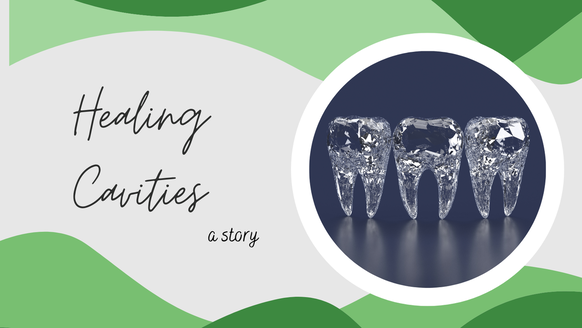
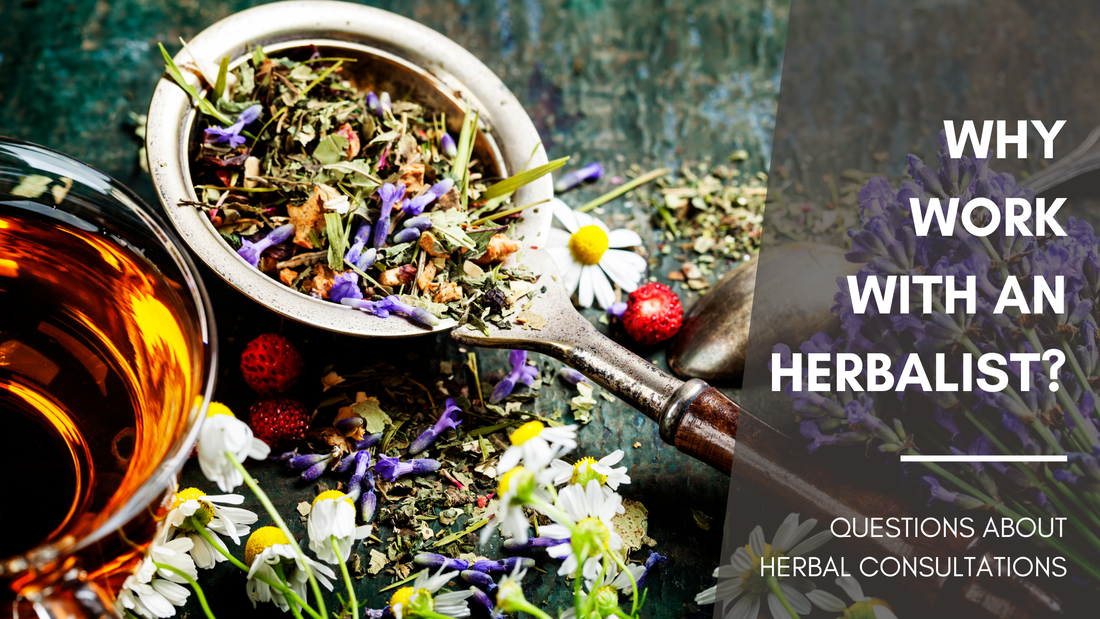
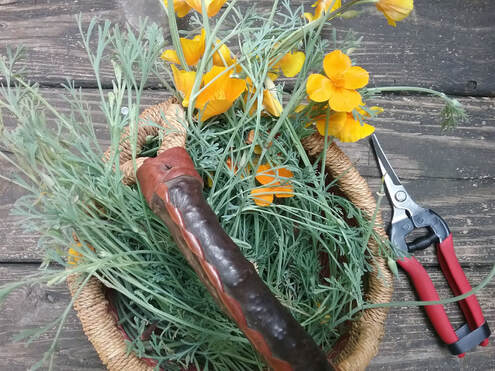

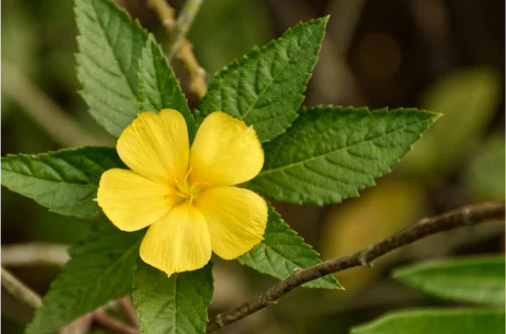
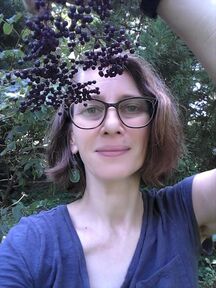
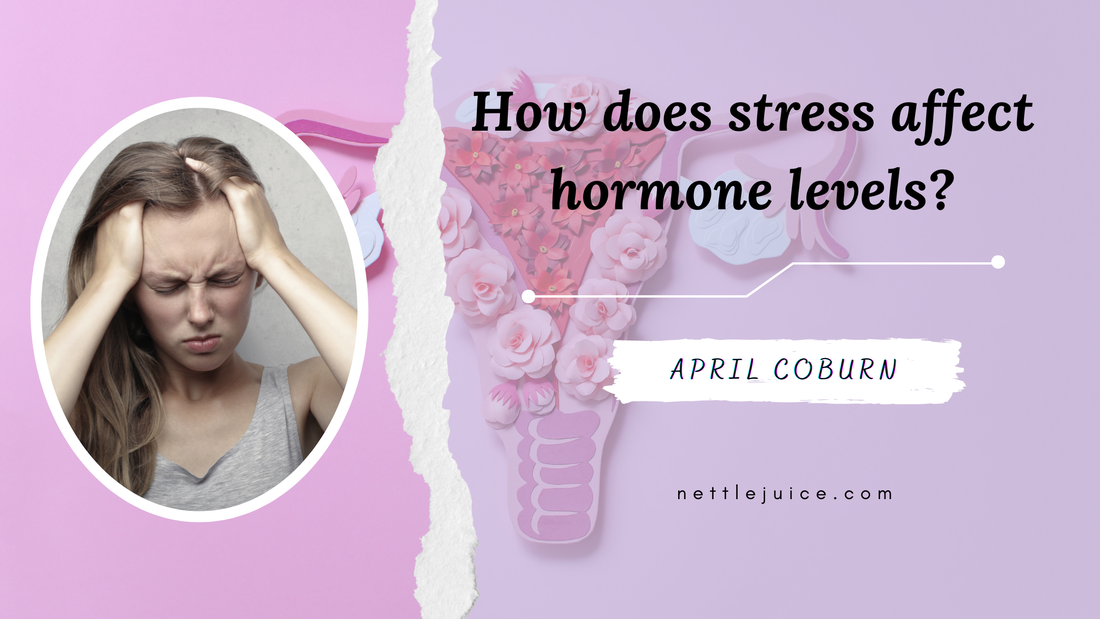
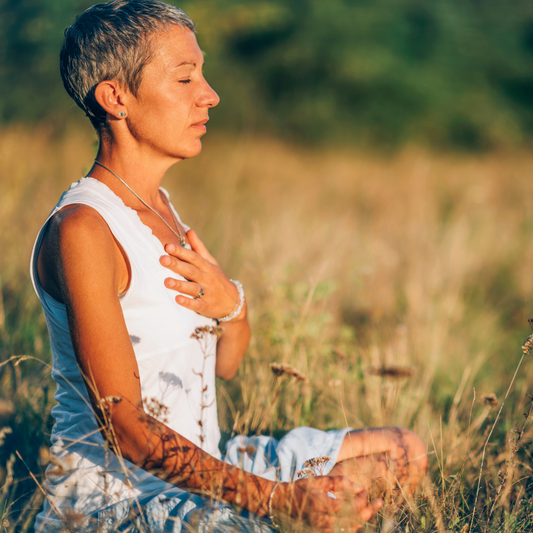
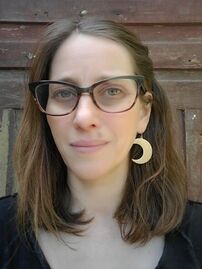

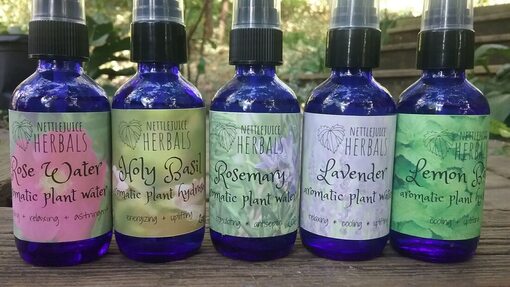
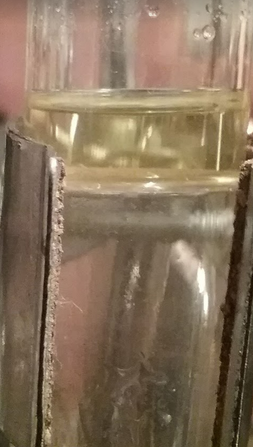

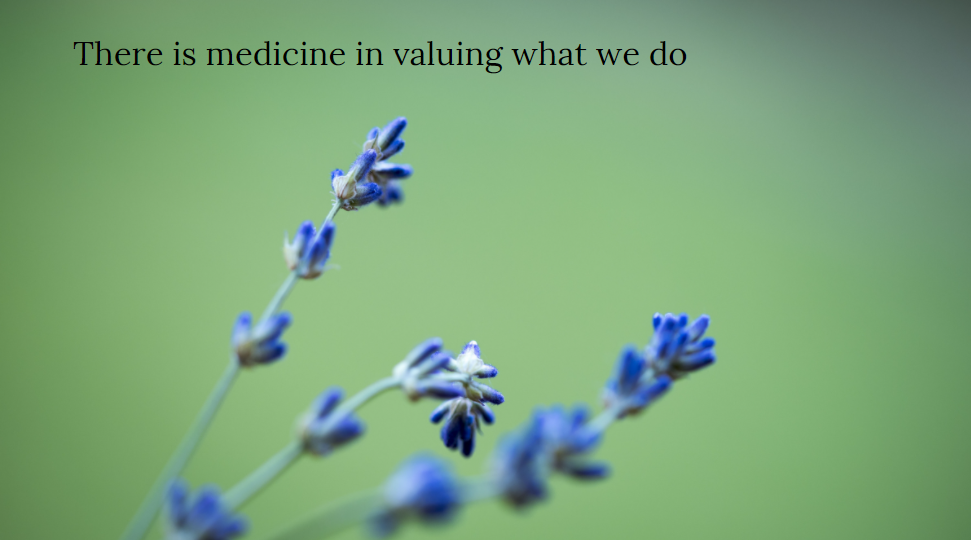
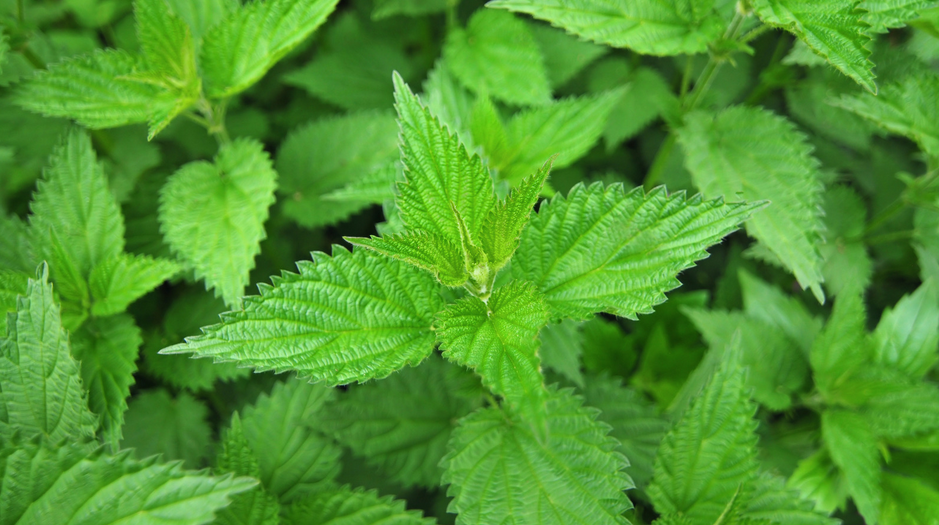
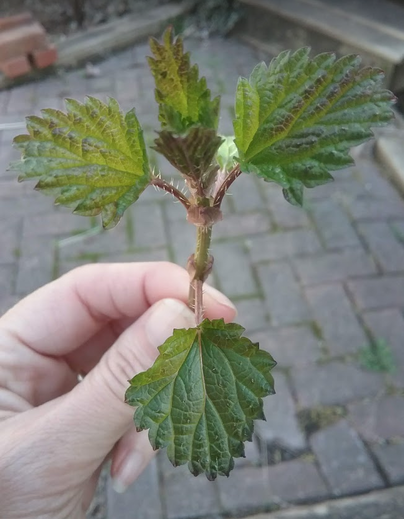
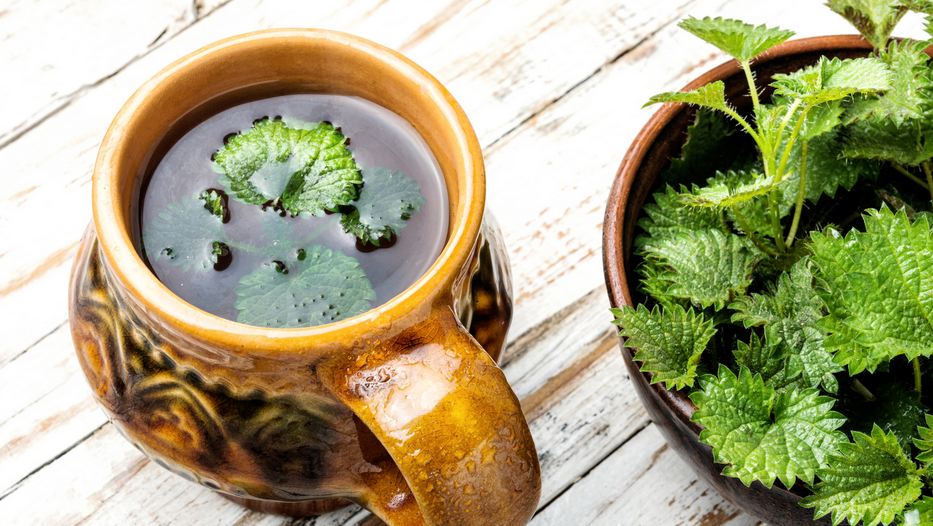
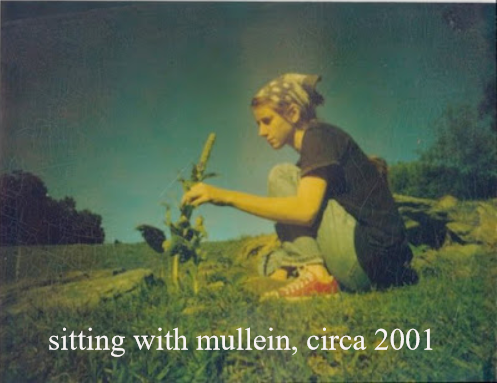
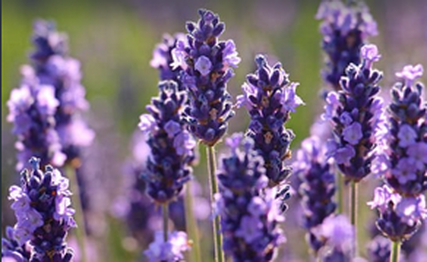
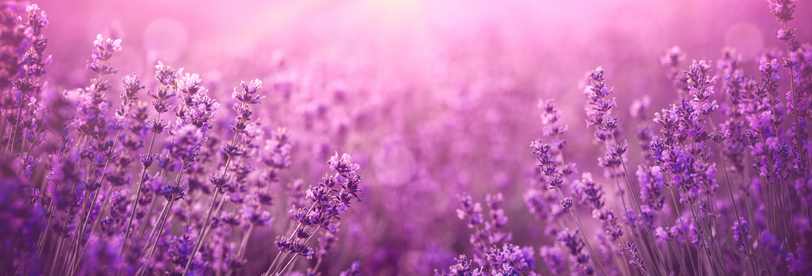
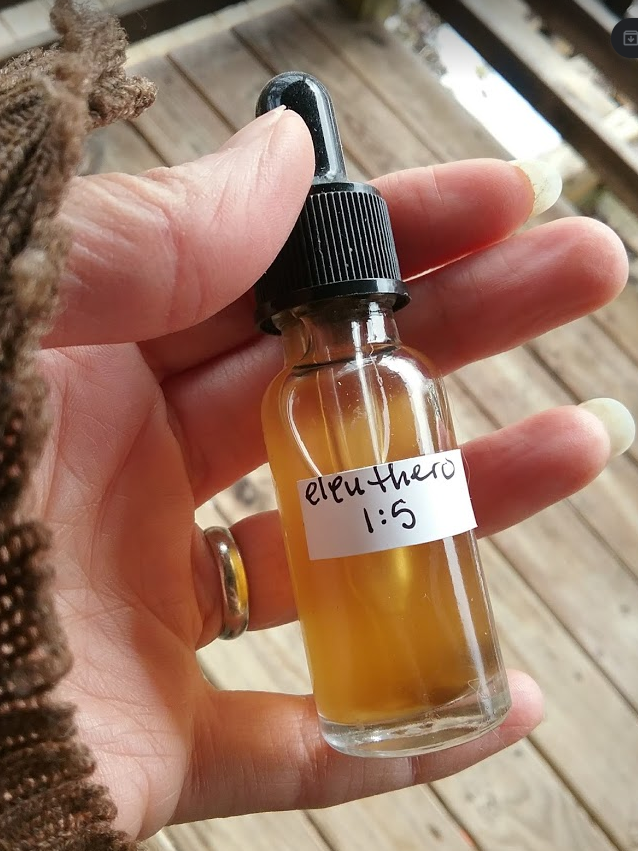
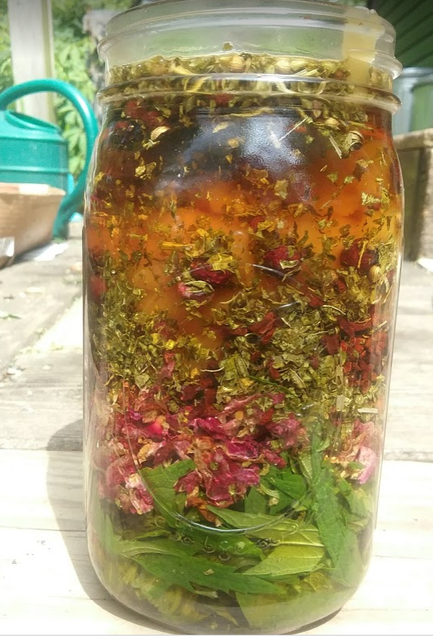

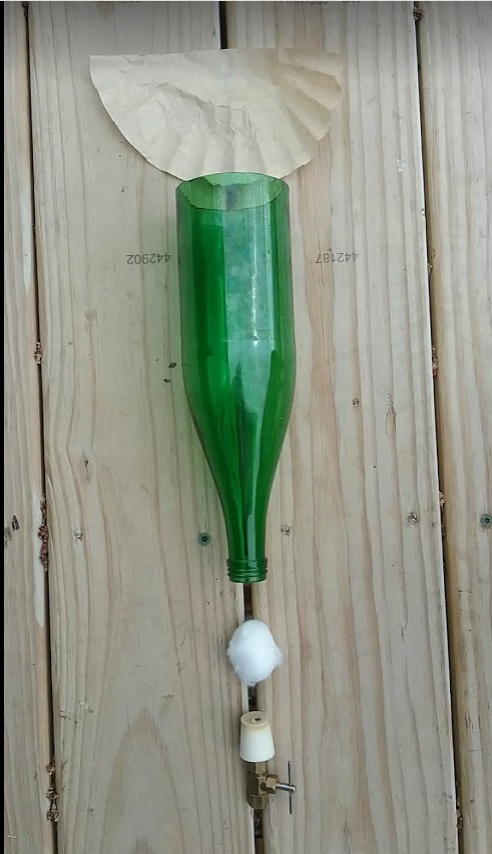
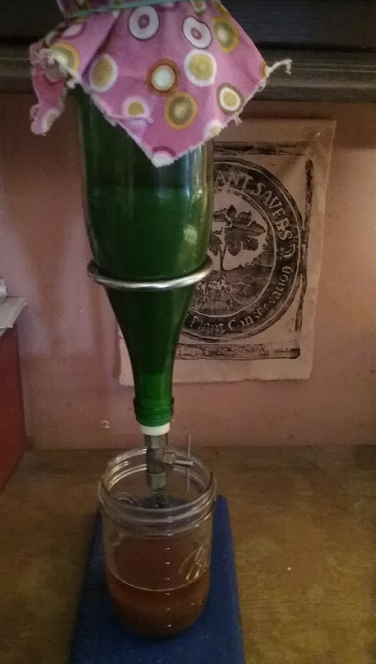
 RSS Feed
RSS Feed
